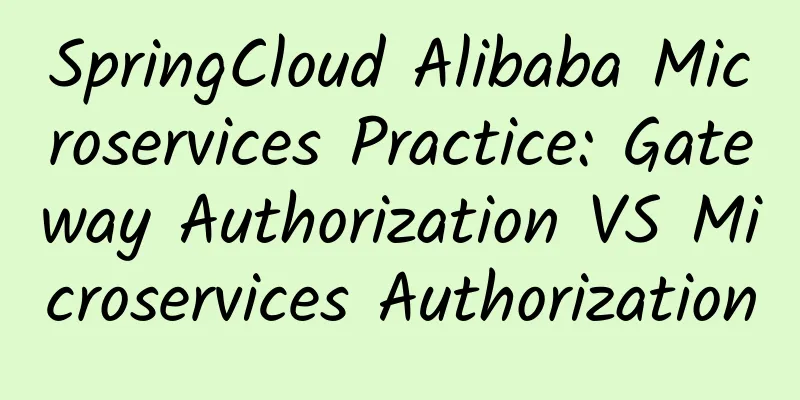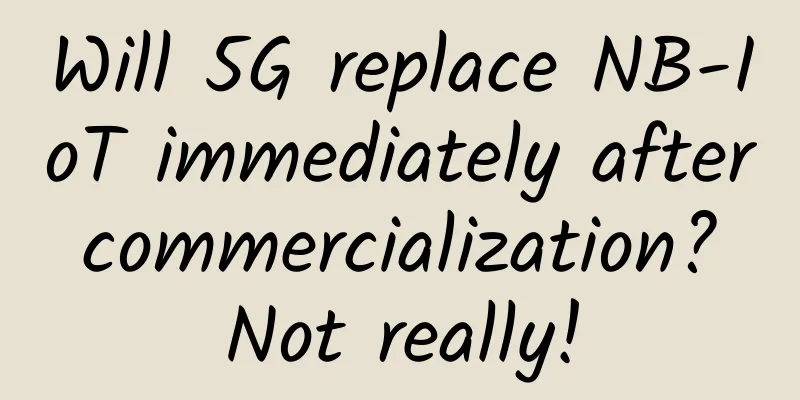SpringCloud Alibaba Microservices Practice: Gateway Authorization VS Microservices Authorization

|
This article is reprinted from the WeChat public account "JAVA Daily Record", the author is single tone. Please contact the JAVA Daily Record public account for reprinting this article. In the SpringCloud architecture, there are two ways to implement authorization:
Both methods have implementation solutions in this series of articles, so the question is: which one is the best solution and which one is more reasonable? I'm sorry, but you may not get the answer you want after reading this article, because the conclusion is that there is no optimal solution. Both solutions have their own advantages and disadvantages, and you can only choose the corresponding solution based on your own business. In this article, we will make a simple comparison between the two solutions so that everyone can have a reference for making a decision. Solution Comparison First, let's look at the principles of the two solutions: If you have any questions about the specific implementation methods, you can refer to this article: SpringCloud Alibaba Microservices Practice 19 - Integrated RBAC Authorization Gateway Authorization Gateway-based authorization is also called path matcher-based authorization. When a request passes through the gateway, it verifies whether the path of the current request is in the resource path owned by the user. When authorization is based on a path matcher, it is necessary to consider the RESTful-style access path, such as /account-service/blog/user/{id} or /account-service/blog/**, etc. Therefore, authorization at the gateway is mainly based on wildcard matching. Microservice authorization Microservice authorization is also called method-based interception. The corresponding method identifier is marked on the resource and then assigned to the user. The corresponding annotation is used to determine whether the current user has permission to access this method on the request method. For example, the @PreAuthorize("hasAuthority('')") annotation in SpringSecurity and the @RequiresPermissions('') annotation in Shiro. Whether it is SpringSecurity or Shiro, their implementation principle is based on keyword exact matching. Advantages and disadvantages comparison Gateway Authorization advantage The advantage of using gateway authorization is obvious. All backend microservices only need to be ordinary services and no longer need to rely on permissions. shortcoming The performance of wildcard matching in the gateway is relatively poor. The wildcard needs to be split, matching the prefix first, and then matching the wildcard after the prefix matches. Here you can see the implementation logic of org.springframework.util.AntPathMatcher#doMatch(). For RESTful-style URL paths, permissions cannot be finely controlled For example, a microservice has the following API
In this way, when the gateway obtains the user request path through the request.getURI().getPath() method, it is the same address. After granting a user the /v1/pb/user permission, he has three different permissions: GET, PUT, and POST. Obviously, this cannot meet the requirements of fine-grained permission control. As for how to solve this problem, I wrote an article to discuss it. Students who are interested can take a look: SpringCloud Alibaba Microservices Practice 25 - Restful Interface Interception Microservice authorization advantage: The disadvantages of gateway authorization mentioned above are actually the advantages of microservice authorization. It is completely matched based on method interception, consumes very little CPU, and there is no RestFul problem. shortcoming: The implementation is relatively complicated. All resource server related configurations need to be introduced in the SpringSecurity Oauth2 system, so a separate resource server module is generally established. This is also a problem that needs to be solved in the next article of the series. in conclusion Here we try to summarize the two implementation solutions. If the system functions and business modules are not many, the gateway authorization mode can be used. This is the simplest and most convenient implementation. Although the Restful style cannot fine-tune the permission control problem, we can solve it by adding a Method field. If your system is large and there are many resources that need to be authorized, it is recommended to adopt the microservice authorization model. In order to avoid the need for each microservice to handle the logic of permission verification, we also need to extract a common permission authentication module for the backend service to reference. |
<<: People's Daily Overseas Edition: "China's Internet Speed" Empowers Thousands of Industries
>>: BICS: 5G device connectivity unlocks new IoT use cases
Recommend
Computing power networks connect the digital society. How should operators seize the new opportunities of the era?
Computing network is an emerging technology conce...
With the support of celebrities, how fast can 5G run?
With the freezing of 5G 1.0 version, the first co...
Hosteons: Free upgrade to 10Gbps ports in Los Angeles/New York/Dallas, KVM annual payment starts at $21
In January this year, Hosteons began to provide 1...
edgeNAT Double Holiday Promotion: VPS special price starting from 199 yuan per year, 30% off for regular monthly packages and 40% off for annual packages
edgeNAT has just released a promotional event dur...
Consumer finance practitioners tell the story: Black industry fraud is becoming more high-tech
[[188974]] Chinese consumer finance practitioners...
The first commercial 5G mobile network in the United States is here! Verizon, a US telecom operator, enters the market
U.S. telecom operator Verizon announced on Wednes...
CloudCone: 1GB memory KVM annual payment of $12.95, 2GB memory KVM annual payment from $15
CloudCone's 3rd anniversary event is drawing ...
Edge Data Centers and the Impact of 5G
A new category of data center will become a major...
HostDare: 20% off on CN2 GIA line in Los Angeles, starting at $28.7/year, 25% off on NVMe series QSSD, starting at $23.2/year
HostDare has launched a summer promotion. From no...
Dan Yi from Liepin.com: Welcome to the heyday of machine learning
On November 25-26, 2016, the WOT 2016 Big Data Te...
China Telecom Tianyi Cloud 3.0 helps Heizi Technology build Zhongshan intelligent cloud platform
In May 2015, the state released the "Made in...
Don’t let “number portability” confuse consumers
According to media reports, the Ministry of Indus...
Who is most nervous about the hyper-convergence reshuffle? American companies save 96% of costs by using hyper-convergence
【51CTO.com Quick Translation】According to Gartner...









